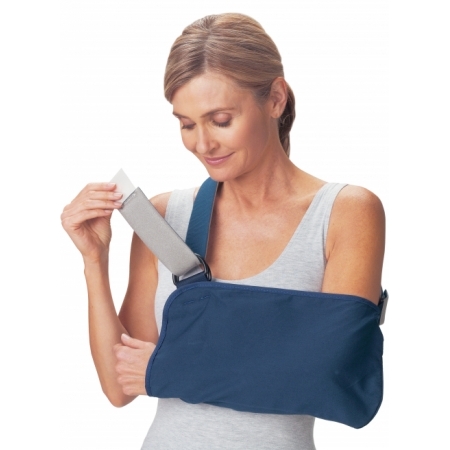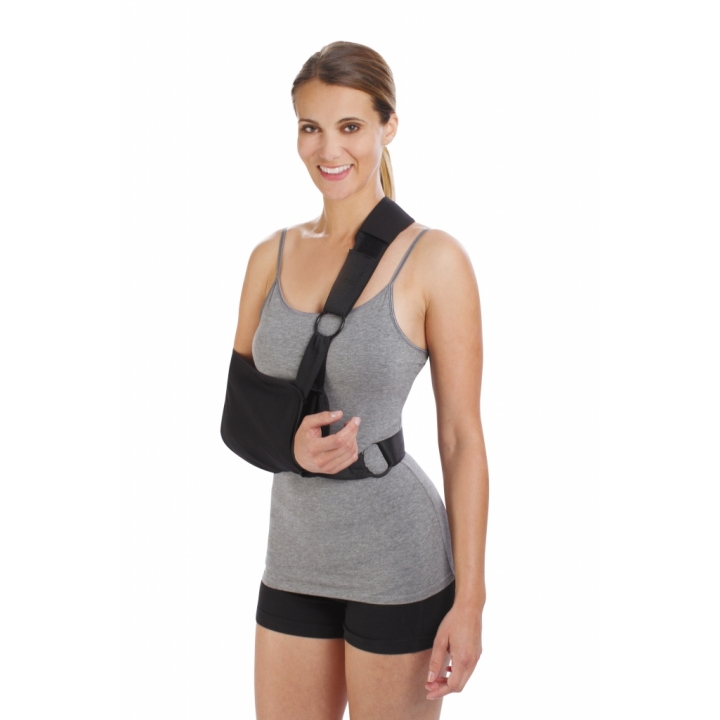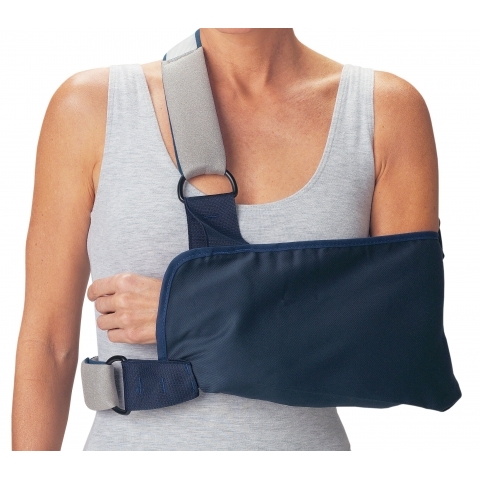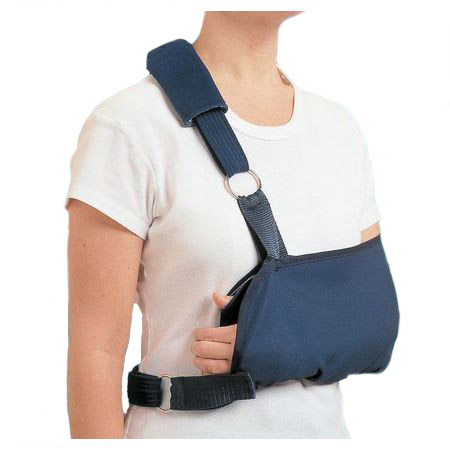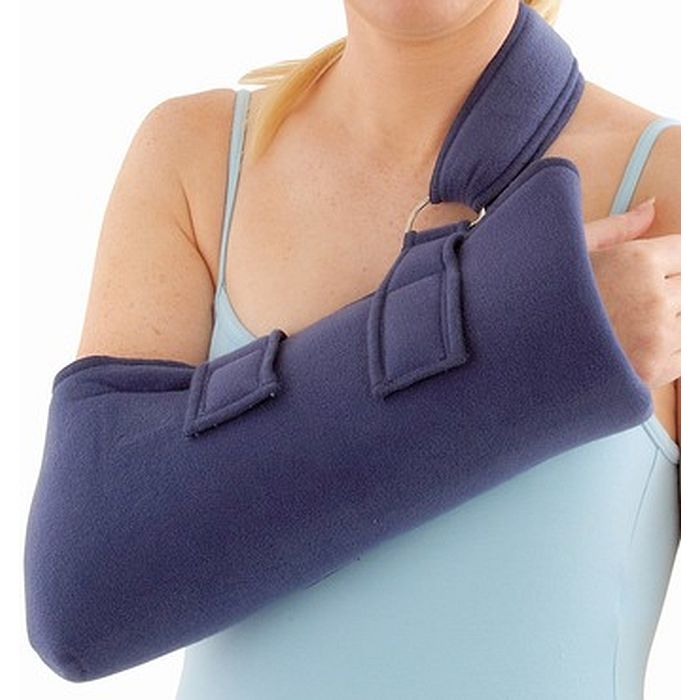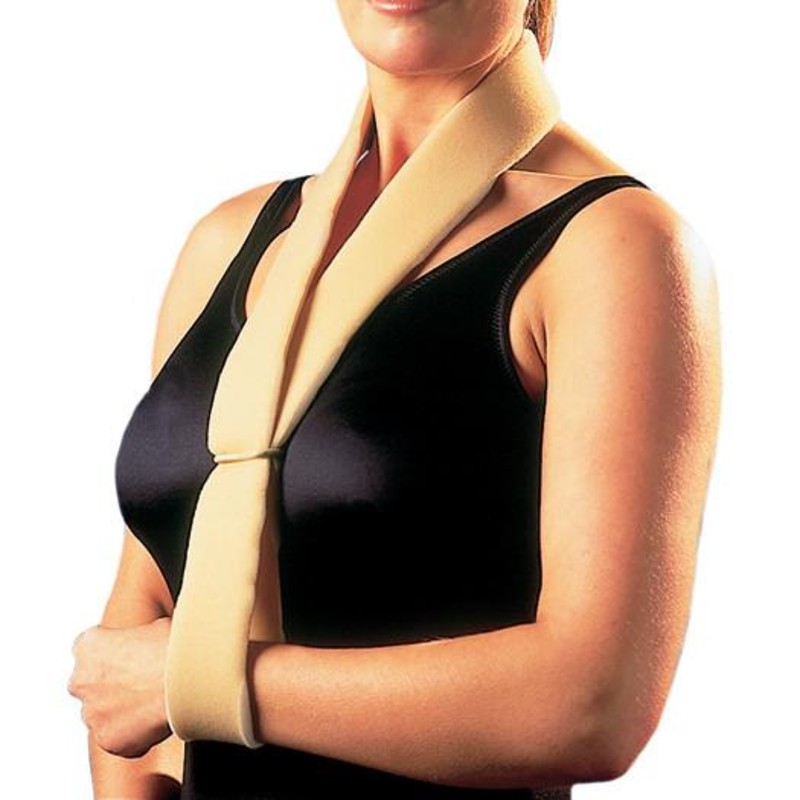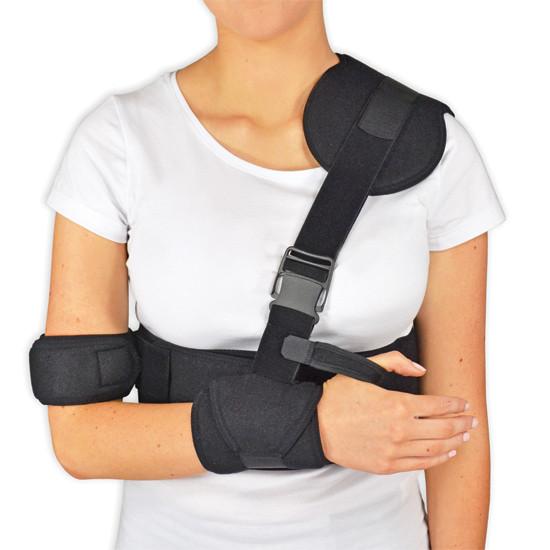Arms Slings vs Shoulder Immobilisers: What's the Difference?
Whether you've had a serious injury, or you're recovering from an operation or surgery, the choice of slings, immobilisers and supports can be overwhelming. With so much choice out there, how do you know which shape and style is right for you and your recovery?
We've contacted product experts and put together this simple guide to break down the minute differences between Arm Slings and Shoulder Immobilisers. We've also thrown in a few of our best sellers and favourites to help point you in the right direction.
What Exactly Does Our Guide Cover?
We understand that getting the right support following a break or injury can seem daunting. If you know what you're looking for, simply click one of the quick links below to jump right in.
Alternatively, if you'd like more information, we've broken down each option below to give you the most information we can. Keep scrolling to view our top choices.
Expert Recommendations
- The Number One Arm Sling
- The Number One Shoulder Immobiliser
- The Best Shoulder Immobiliser for Rotator Cuff Injury
- The Best Shoulder Sling for Dislocation
- The Best Arm Sling for Chronic Shoulder Pain
- The Number Sling Option for Children
- The Best Sling for a Broken Wrist
- The Best Arm Sling for a Broken Collar Bone
Information Centre
- Arm Slings and Shoulder Immobilisers: What's the Difference?
- When Is An Arm Sling the Best Option?
- When Is a Shoulder Immobiliser the Best Option?
- Other Useful Pages
The Number One Arm Sling
Winner: Procare Blue Vogue Arm Sling
✔ Multifunctional and ambidextrous sling for cradling arm and elbow
✔ Adjust cradle height seamlessly using simple strap system
✔ Deep envelope shields the arm for optimum cast protection
Perfect for...
✔ A broken arm or elbow
✔ The recovery process following forearm surgery
Not the Best for:
✗ Immobilisation of the shoulder (see our number one)
✗ Those requiring a waist strap (see our top choice)
Editor's Verdict: With a generously deep envelope and an easily customisable strap system, the Procare Blue Vogue Arm Sling is tough to beat when it comes to versatility. Ideal for treating arm injuries, the shoulder straps are soft and comfortable and the innovative depth of the design prevents the sling migrating down the arm throughout the day.
We love it so much, we've even made a video about it.
Customer's Verdict: "This provides stability and comfort. I have 3 broken bones in my arm and wrist. I am a petite 5'2" but I ordered the large and I find it perfect. I have adjusted the Velcro to fit and I can now slide my bulky cast into the sling, pop the wide strap over my head and reverse these steps to take off, so no need to keep adjusting. When the cast comes off and I need to wear a splint I will be able to fit long sleeve clothes into this larger size sling. Hope this helps." - Jean ★★★★★
The Number One Shoulder Immobiliser
Winner: Procare Clinic Shoulder Immobiliser
Features We Love:
✔ Ambidextrous brace can be worn on either side
✔ Waist strap maximises shoulder immobilisation
✔ Reinforced pad at the neck reduces friction and irritation
Perfect for...
✔ Rotator cuff tear
✔ Frozen shoulder and arthritis
Not the Best for:
✗ Broken arm (see our top choice)
✗ Broken collar bone (see our number one)
Editor's Verdict: Any immobiliser worth it's salt will feature a waist or chest band to maximise immobilisation of the shoulder. The Procare Clinic Shoulder Immobiliser keeps the entire arm close to the body using an ergonomically designed waist and neck strap system. If you've been told to restrict movement in the shoulder and upper back, there's no better option.
Customer's Verdict: "I bought this item to enable me to go back to work and not be tempted to use my shoulder as i have a very severe shoulder injury. It has worked wonders, not only am I back to work (on lighter duties) but can work safely without jeopardising the healing process" - Karen ★★★★★
The Best Shoulder Immobiliser for Rotator Cuff Injury
Winner: Shoulder Immobiliser With Foam Straps
Features We Love:
✔ Cotton foundation fabric is the softest we sell
✔ Foam straps at the waist and shoulder are unbelievably comfortable
✔ Has dual use as an arm-injury sling and rotator cuff immobiliser
Perfect for...
✔ Rotator cuff tears
✔ A dislocated shoulder
Not the Best for:
✗ Children (see our number one)
✗ Raising the arm as high as possible (see our top choice)
Editor's Verdict: If you know you're going to be wearing a sling or immobiliser for a while, then comfort is a top priority. Thankfully, there's no better option for this than the Shoulder Immobiliser With Foam Straps. Made with a soft cotton foundation and twin foam coated straps, there's zero room for irritation, itching and friction.
Customer's Verdict: "Excellent product well made and very comfortable. After having Rotator Cuff Repair and Carpal Tunnel operations at the same time on right arm. This item was a blessing" - Eric ★★★★★
The Best Shoulder Immobiliser for Dislocation
Winner: Rolyan Deluxe Shoulder Immobiliser
Features We Love:
✔ Deep envelope design with thumb cradle
✔ Waist strap helps prevent arm straying away from body
✔ Ergonomic design matches the natural resting position of the arm
Perfect for...
✔ Separations, dislocations and strains
✔ Those needing larger size options
Not the Best for:
✗ An unbelievable level of comfort (see our top choice)
✗ Healing a broken wrist (see our number one)
Editor's Verdict: If you're looking for an inexpensive option that doesn't skimp on comfort, look no further. The Rolyan Deluxe Shoulder Immobiliser combines a deep envelope pocket with a waist strap to immobilise the shoulder for use treating separations, tears and dislocations. These twin straps keep the arm close to the body, preventing the shoulder joint from rolling or rotating during your rehabilitation period.
Customer's Verdict: "This sling was for my son who dislocated his shoulder. It gives great support and can be adjusted for comfort. Much better than what the hospital provided." - Beverley ★★★★★
The Best Arm Sling for Chronic Shoulder Pain
Winner: Elevated High Arm Sling
Features We Love:
✔ Great for treating chronic pain
✔ Has greater capability for raising the arm than any other option
✔ Soft and comfortable fabric throughout
Perfect for...
✔ Shoulder instability
✔ Chronic pain in the shoulder joint
Not the Best for:
✗ Those after a range of size options (see our number one)
✗ Treating serious tears or fractures (see our top choice)
Editor's Verdict: If you've been professionally advised to elevate your arm during your recovery process, there's no better option than the Elevated High Arm Sling. Capable of shortening its soft and comfortable strap to a length that forces the arm into a more acute angle, the Elevated Sling is greater for treating chronic pain that requires the arm to be elevated during rehabilitation.
Customer's Verdict: "Following a rotator cuff operation my husband was fitted with this arm sling which, with the additional strap, holds the shoulder in place over the body during the post op healing process. Easy to fit, comfortable to wear and adaptable to use over clothing without the body strap after the initial period of healing. Looks as though it will hand wash without a problem" - Gillian ★★★★★
The Best Arm Sling for a Broken Wrist
Winner: Universal Pro Collar and Cuff Sling
Features We Love:
✔ Inobtrusive design is highly breathable
✔ Incredibly lightweight foundation is great for minor injuries
✔ Refined design is great for children
Perfect for...
✔ Injuries where a cast has been applied
✔ Children with a broken arm or wrist
Not the Best for:
✗ Rotator cuff injuries (see our top choice)
✗ A deep envelope (see our number one)
Editor's Verdict: A lightweight option that's ideal for those after an unobtrusive sling that doesn't compromise on support. The traditional looped style uses the neck to support and cradle the arm. The lack of fabric and material gives greater breathability, making it an ideal option for use in the summer months.
Customer's Verdict: "Having broken my wrist, I needed efficient elevation. This sling is simple, easily adjustable, and simply does the job. Very good service, excellent communications and speedy delivery, Thank you" - Sophie ★★★★★
The Best Arm Sling for a Broken Collar Bone
Winner: Jura Shouder/Arm Immobiliser
Features We Love:
✔ Jura Immobiliser grants the ability to make micro adjustments
✔ Multiple points of contact bolsters arm support
✔ Inobtrusive cradle maximises breathability
Perfect for...
✔ Collar bone injuries
✔ Rotator cuff tears
Not the Best for:
✗ A simpler style (see our number one)
✗ A broken arm or elbow (see our top choice)
Editor's Verdict: The Jura Shoulder/Arm Immobiliser is the ultimate when it comes to immobilisation. Micro adjustments can be made across the sling, making it perfect for those in the market for something highly customisable. The arm is immobilised at two points and the shoulder strap features a soft and comfortable patch pad that guarantees irritation-free support.
Customer's Verdict: "Ordered the JSL sling to aid recovery from a broken left collarbone, as it appeared to fit my requirements. It works exactly how I had imagined it would. It is macro and micro adjustable for a perfect fit and can be altered to fit the right side too. It holds the shoulder comfortably in one position which means I can be quite active without putting any stress on my collarbone which will no doubt allow the break to repair ASAP" - Malcolm ★★★★★
What's the Difference Between a Sling and an Immobiliser?
What Is An Arm Sling?
A standard arm sling will have one shoulder strap which is likely to be adjustable. Ideally, this shoulder strap will have some form of padding to make it comfortable for wear over extended periods.
Most arm slings also feature an "envelope" of material where the arm is supported. Basic arm slings may only have a small wrist strap supporting the arm for suitable use treating more minor injuries.
What Is a Shoulder Immobiliser?
Shoulder Immobilisers look similar to arm slings, however they're designed to keep the arm stable and close to the body in order to fully immobilise the shoulder. The shoulder is immobilised by a strap that is attached to the arm and fastened around the waist.
When Should I Use An Arm Sling?
Whilst you should always follow the advice of a medical professional during your recovery phase, there are a few truths that ring true no matter what. Slings tend to be more suitable for arm injuries, where the forearm, wrist and elbow need to be cradled to allow the bones to set in place and heal correctly.
When Should I Use a Shoulder Immobiliser?
A shoulder immobiliser is naturally more suited for shoulder injuries, where the big joint at the back of the body requires the arm to be completely immobilised. Because the arm moves so much during the day, healing from a rotator cuff or shoulder injury can be difficult.
Shoulder immobilisers keep the arm raised and close to the body using the aid of a waist or chest band or strap. This prevents the arm drifting and the joint rotating.
Other Useful Pages
We hope you've found what you're looking for in our step-by-step guide to Arm Slings and Shoulder Immobilisers. If you haven't, don't worry. There's plenty more pages that you can access by clicking any of the quick links, below:
- Our Full Range of Arm Slings and Shoulder Immobilisers
- Our Full Range of Elevated Shoulder Immobilisers
- Our Full Range of Children's Slings
- Our Full Range of Collar and Cuff Style Slings
- How to Find the Right Arm Sling for You
If you've got something to add, feel free to leave a comment below. Alternatively, you can get in touch via our Twitter and Facebook pages!

